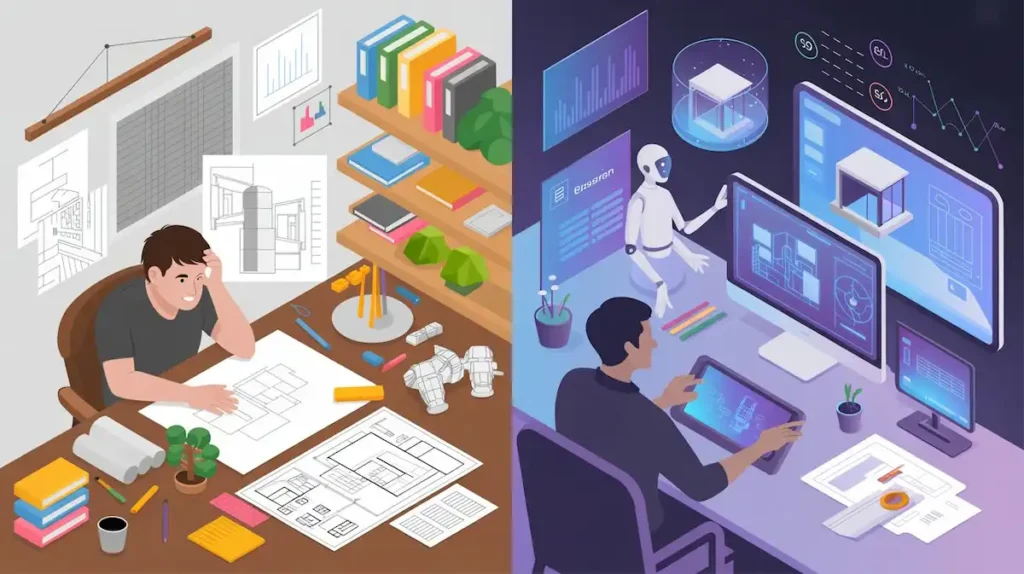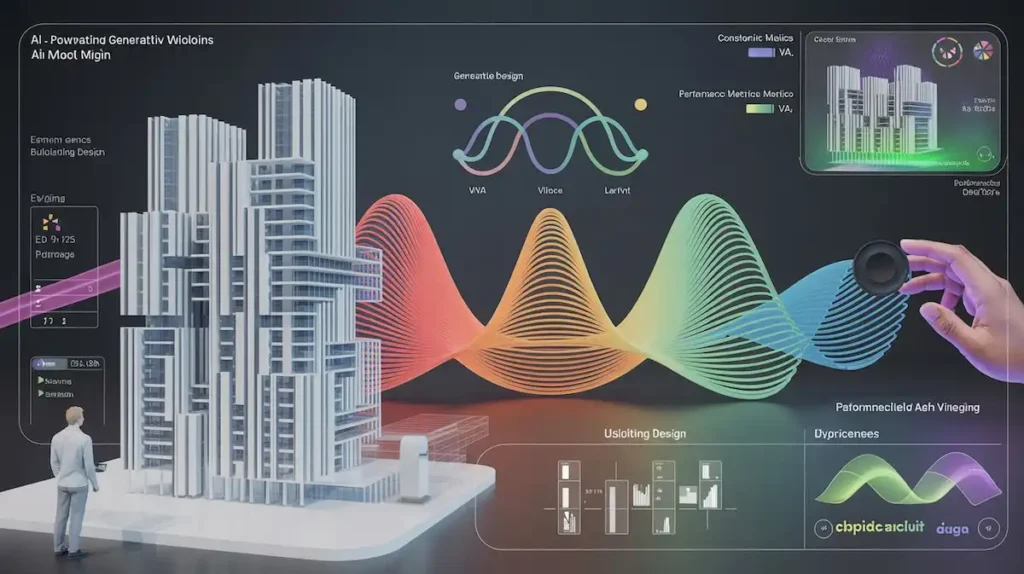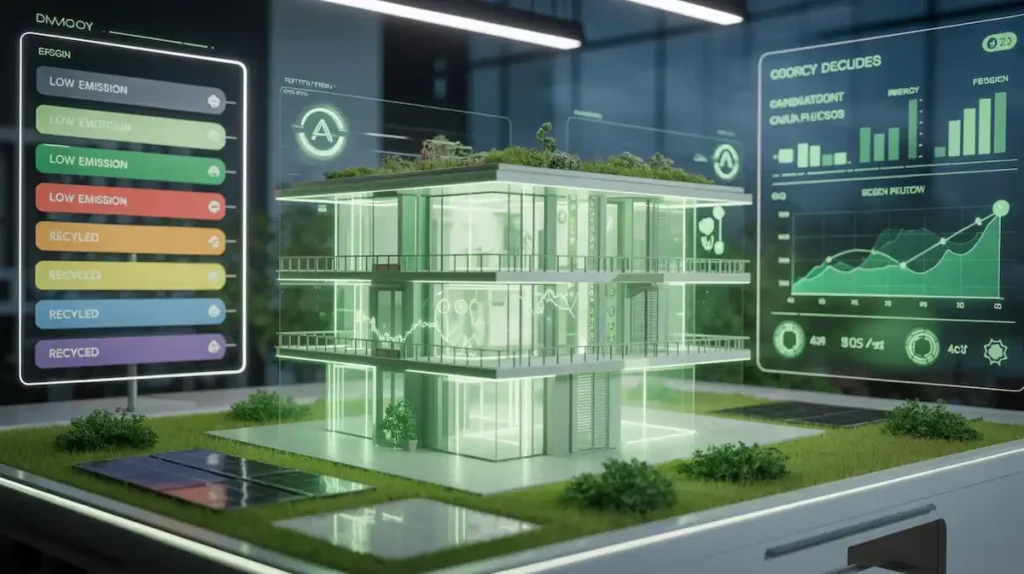In the rapidly evolving world of architectural design, artificial intelligence (AI) is not just a buzzword but a transformative force reshaping how buildings are conceived, designed, and constructed. As the architecture, engineering, and construction (AEC) industry faces increasing demands for efficiency, sustainability, and innovation, AI-powered solutions like NeoBIM are leading the charge in revolutionizing traditional workflows.
This comprehensive exploration delves into how AI is fundamentally changing architectural design processes, offering unprecedented opportunities for automation, optimization, and creativity.

Understanding NeoBIM: Pioneering AI-Driven Building Information Modeling
NeoBIM stands at the forefront of architectural innovation, pioneering AI-driven Building Information Modeling (BIM) to make architectural design and construction more efficient and accessible.
The platform’s mission is clear: to revolutionize BIM technology, making it simpler and faster for everyone in the construction industry. By streamlining the design process, reducing manual effort, and increasing efficiency, NeoBIM is bringing BIM into the future with AI at its core.
The platform generates optimized layouts, automates repetitive tasks, and integrates seamlessly with existing tools like Revit, creating a comprehensive solution for architects, planners, and construction professionals.
I. Traditional vs AI-Enhanced Design

Workflow Comparison
Traditional architectural design workflows have long been characterized by linear processes, siloed information, and manual iterations that consume valuable time and resources. Architects typically move through distinct phases—conceptual design, schematic design, design development, and construction documentation—with limited ability to quickly explore alternatives or optimize designs based on performance criteria.
In contrast, AI-enhanced design workflows introduce a paradigm shift by enabling parallel processing, continuous optimization, and automated analysis throughout the design process. AI algorithms can generate and evaluate thousands of design alternatives based on specific parameters, pushing the boundaries of creativity while ensuring practical feasibility. This fundamental change allows architects to focus on higher-level design decisions while AI handles repetitive tasks and complex calculations.
The integration of AI into architectural workflows transforms the role of architects from drafters to strategic design directors. Rather than spending hours on manual drafting and basic analysis, architects can leverage AI to explore more design options, conduct sophisticated simulations, and make data-driven decisions that enhance both the aesthetic and functional aspects of their designs.
Time and Cost Analysis
The impact of AI on architectural design timelines and budgets is substantial and measurable. According to Stanford University’s Center for Integrated Facilities Engineering, BIM technologies (which are further enhanced by AI) can reduce project time by up to 7% and achieve cost estimation accuracy within 3% compared to traditional methods. Additionally, these technologies can eliminate up to 40% of unbudgeted changes and reduce the time taken to generate cost estimates by up to 80%.
When AI is integrated into BIM processes, the return on investment becomes even more impressive. Studies of BIM implementation across various projects have shown ROI ranging from 140% to 39,900%, with an average of 634% for projects without planning or value analysis phases. These figures highlight the tremendous economic potential of AI-enhanced architectural design workflows.
NeoBIM’s AI-powered platform exemplifies these benefits, with users reporting that tasks that previously took days are now completed in minutes. Project timelines have been cut by half while improving accuracy and collaboration, demonstrating the tangible advantages of AI integration in architectural workflows. The ability to generate 3D models and drawings in minutes represents a paradigm shift in productivity that translates directly to cost savings and competitive advantage.
II. Automated Design Technologies

Generative Design Principles
Generative design represents one of the most revolutionary applications of AI in architecture. Unlike traditional design approaches where architects manually create and modify designs, generative design uses algorithms to automatically produce numerous design options based on specified constraints and goals. This process combines artificial intelligence with user input to rapidly generate iterations of property designs, both exterior and floor plans.
The core principle behind generative design is the establishment of parameters and constraints that guide the AI in exploring the design space. Architects define requirements such as building type, dimensions, density, and performance metrics, and the generative design algorithms use these parameters in conjunction with property intelligence—including local regulations—to create optimal solutions. The AI rapidly scores initial designs and then uses the highest-scoring elements and features in further iterations, continuously refining the results.
NeoBIM leverages advanced generative AI models, including Large Language Models (LLMs), Generative Adversarial Networks (GANs), Variational Autoencoders (VAEs), and Diffusion Models to power its generative design capabilities. This technology enables architects to investigate various ideas and solutions, resulting in more imaginative and effective designs that would be impossible to explore manually within reasonable timeframes.
Parametric Design Integration
Parametric design represents another powerful approach that complements generative design in AI-enhanced architectural workflows. While generative design focuses on creating multiple design options, parametric design establishes relationships between various elements of a design, ensuring that changes to one aspect automatically adjust related components.
The integration of parametric design with BIM platforms enhances flexibility and efficiency in architectural workflows. By defining relationships and rules that govern model behavior, architects can quickly explore a wide range of design alternatives, making instant parameter adjustments that are reflected throughout the BIM model. For example, modifying a building’s height or adjusting the spacing of structural elements gets immediately updated across the entire model, ensuring consistency and accuracy.
NeoBIM’s platform seamlessly integrates parametric design principles with AI capabilities, creating a powerful synergy that enhances both creativity and productivity. This integration allows for the development of complex, adaptable structures that can be efficiently modified and optimized throughout the design process. The result is a more fluid, dynamic data manipulation system that makes it easier to accommodate changes and updates in a project.
AI Optimization Algorithms
AI optimization algorithms form the backbone of intelligent decision-making in automated architectural design workflows. These algorithms analyze vast amounts of data to identify optimal solutions for complex design problems, balancing multiple objectives such as spatial efficiency, structural integrity, energy performance, and cost.
Advanced AI techniques like reinforcement learning are particularly valuable in architectural optimization. Reinforcement learning algorithms learn optimal strategies by interacting with the environment and receiving feedback, allowing them to improve their performance over time. This approach is well-suited to architectural design, where decisions must balance numerous competing factors.
NeoBIM employs sophisticated AI optimization algorithms, including asynchronous dominant action evaluation (A3C) and residual recurrent neural networks (R2N2), to enhance resource scheduling and design optimization. These technologies enable the platform to make intelligent decisions about design elements, material usage, and spatial arrangements, resulting in more efficient and effective architectural solutions.
III. Sustainable Design Applications

Environmental Impact Analysis
AI is transforming how architects assess and minimize the environmental impact of their designs. AI-powered systems can analyze massive databases of environmental conditions and material properties to recommend the most environmentally friendly choices for construction projects. These tools consider factors such as material lifecycle, recyclability, energy consumption during production, and carbon footprint to ensure that buildings achieve their sustainability goals.
NeoBIM’s AI capabilities enable comprehensive environmental impact analysis throughout the design process. The platform can simulate various scenarios to predict a building’s environmental performance, allowing architects to make informed decisions that align with sustainability objectives. This proactive approach to environmental design helps reduce the ecological footprint of construction projects and contributes to more responsible building practices.
Research indicates that AI-driven environmental analysis can significantly reduce the carbon footprint of buildings by optimizing material selection, energy systems, and spatial configurations. By integrating life cycle assessments into the planning process, NeoBIM helps make building emissions measurable and comparable, creating effective opportunities for optimization.
Energy Efficiency Optimization
Energy efficiency stands as one of the most critical aspects of sustainable building design, and AI offers powerful tools for optimization in this area. AI-powered energy modeling tools can simulate building performance, predict energy usage, and optimize design parameters such as insulation levels, glazing ratios, and shading devices to minimize heating, cooling, and lighting loads while maximizing natural ventilation and daylighting.
NeoBIM’s platform incorporates advanced energy modeling capabilities that analyze factors such as building orientation, envelope design, and mechanical systems to identify opportunities for efficiency improvements. The platform can generate and evaluate thousands of design alternatives based on energy performance criteria, enabling architects to explore a wide range of possibilities and identify optimal solutions.
The impact of AI on energy efficiency is substantial, with studies showing that AI-optimized buildings can achieve energy savings of 20-30% compared to conventional designs. These savings translate to reduced operational costs, lower carbon emissions, and improved occupant comfort, making AI-enhanced energy optimization a valuable investment for building owners and operators.
IV. Implementation Best Practices
Integration Strategies
Successfully implementing AI-powered architectural design tools requires thoughtful integration strategies that align with existing workflows and systems. Organizations should begin by auditing current workflows to identify inefficiencies and bottlenecks that could benefit from AI automation. This assessment provides a foundation for defining clear objectives and selecting the right tools to achieve them.
When integrating NeoBIM into architectural practices, a phased approach often yields the best results. Starting with pilot projects allows teams to refine workflows and address challenges before full-scale implementation. Integration with existing BIM platforms and design tools should be carefully planned to ensure seamless data exchange and collaboration.
Effective integration also involves establishing clear protocols for data management, quality control, and collaboration. By defining standards for model development, analysis procedures, and design reviews, organizations can maximize the benefits of AI-enhanced workflows while maintaining consistency and reliability.
Team Training Requirements
The successful adoption of AI in architectural design depends heavily on proper training and skill development. Teams need to understand not only how to operate AI-powered tools but also how to interpret results, make informed decisions, and leverage AI capabilities to enhance their creative process.
Training programs should cover both technical skills and conceptual understanding. Technical training focuses on software operation, data management, and troubleshooting, while conceptual training addresses the principles of AI, generative design, and parametric modeling. This comprehensive approach ensures that team members can effectively utilize AI tools while maintaining critical thinking and design judgment.
NeoBIM recognizes the importance of training and provides resources to help users maximize the platform’s potential. By investing in skill development and creating a culture of continuous learning, architectural firms can fully leverage the capabilities of AI-enhanced design workflows and achieve significant improvements in efficiency, creativity, and sustainability.
V. Future Trends in AI-Driven Architectural Design

Multimodal AI and Cross-Domain Integration
The future of architectural design lies in multimodal AI systems that combine text, images, audio, and structured data to create more comprehensive and intuitive design tools. These systems will enable architects to interact with design software using natural language, sketches, and gestures, making the design process more intuitive and accessible.
NeoBIM is at the forefront of this trend, developing multimodal AI capabilities that enhance the user experience and expand the possibilities for creative expression. By integrating various forms of input and output, the platform creates a more natural and efficient design environment that aligns with how architects think and work.
Cross-domain integration represents another important trend, with AI systems drawing insights from fields such as materials science, structural engineering, and environmental psychology to inform architectural design decisions. This holistic approach enables more comprehensive optimization and innovation, leading to buildings that better serve human needs while minimizing environmental impact.
AI-Driven Digital Twins and Lifecycle Management
Digital twins—virtual replicas of physical buildings that update in real-time—are becoming increasingly sophisticated with AI integration. These digital models enable continuous monitoring, analysis, and optimization throughout a building’s lifecycle, from design and construction to operation and maintenance.
NeoBIM’s vision includes the development of AI-enhanced digital twins that serve as comprehensive, innovative solutions for the challenges of the architecture, engineering, and construction industry. By integrating a wide range of functions that cover the entire lifecycle of a construction project, NeoBIM creates a digital twin of the building that facilitates ongoing optimization and management.
This approach transforms buildings from static structures to dynamic systems that can adapt to changing needs, environmental conditions, and performance requirements. AI-driven digital twins represent a paradigm shift in how we conceive of buildings, moving from one-time design exercises to continuous processes of adaptation and improvement.
Conclusion
The integration of AI into architectural design workflows represents a fundamental transformation of the profession, offering unprecedented opportunities for efficiency, creativity, and sustainability. By automating routine tasks, generating innovative design options, and optimizing performance across multiple dimensions, AI empowers architects to focus on the aspects of design that require human judgment, creativity, and empathy.
NeoBIM stands at the forefront of this revolution, pioneering AI-driven Building Information Modeling that makes architectural design and construction more efficient and accessible. With its comprehensive approach to integrating generative AI, machine learning, and cloud computing, NeoBIM is creating intuitive user interfaces and advanced data analysis functions that simplify and optimize integral and collaborative planning approaches.
As we look to the future, the continued evolution of AI in architectural design promises even greater advances in automation, optimization, and creativity. By embracing these technologies and developing the skills to leverage them effectively, architects can enhance their capabilities, expand their impact, and create buildings that better serve human needs while respecting planetary boundaries.
The AI revolution in architectural design is not about replacing human creativity but augmenting it with powerful tools that handle complexity, analyze data, and generate options at scales previously impossible. In this new paradigm, architects become directors of intelligent systems, guiding AI toward solutions that embody human values, aspirations, and needs. With platforms like NeoBIM leading the way, the future of architectural design looks brighter, more efficient, and more sustainable than ever before.

